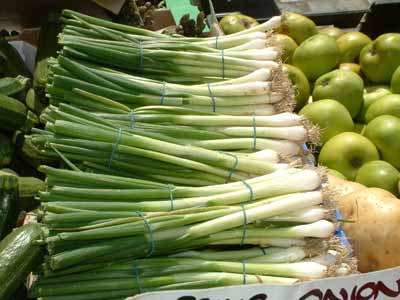There are several varieties of Japanese onion, but long onions (naganegi), green onions (bannonegi), and baby spring onions (US: scallions, salad onions) or chives (asatsuki) are the most common. The green leaves are a good source of nutrients such as carotene and vitamins B1, B2 and C, and also contain a digestive aid. The white part of the long onion, which generally is preferred to the leaves, should be glossy and firm. It is used in soups and nabe dishes and as a seasoning or condiment. Baby spring onions (US: scallions, salad onions) or chives, the thinnest among the onions, are usually chopped and used as a seasoning in soups and nabe (a variety of communal one-pot meals) and noodle dishes. Asatsuki are one of the principal sansai or "mountain vegetables", signifying the arrival of spring.
